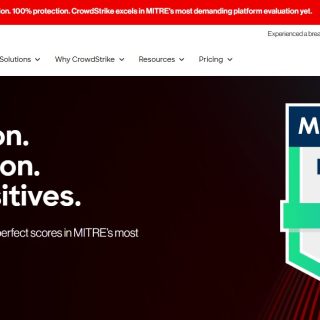
A Deeper Dive into the Sales Process
The classic sales challenge “Sell me this pen” has long been a favorite in sales interviews, popularized by movies like The Wolf of Wall Street. At first glance, the task seems simple: describe the pen’s features, its usability, and maybe throw in a bit of persuasive flair to close the deal. But the exercise goes much deeper, revealing the core of what makes a salesperson effective—understanding the customer’s needs first, before trying to sell them anything.
One of the biggest mistakes salespeople make is trying to sell a product without understanding what the prospect actually needs. Jumping straight into a sales pitch without truly listening to the customer is like firing in the dark—it may work occasionally, but it’s not reliable. Selling is not just about the product; it’s about solving a problem or fulfilling a need. To do that, you must know what the customer needs and why they need it.
Step 1: Recognize the Context and Audience
Before launching into a pitch, the salesperson needs to understand the context. Why does the customer need a pen? Are they a writer, a student, or perhaps someone about to sign an important contract? Knowing the buyer’s background helps shape the entire conversation.
Selling without understanding the customer’s pain points is like playing darts blindfolded. For example, diving straight into the pen’s features—like its sleek design or smooth ink flow—will not be effective if the customer doesn’t care about those things. What matters is understanding why they need the pen in the first place.
Step 2: Ask the Right Questions
Effective selling starts with asking questions, and this is especially important when you don’t know the customer’s needs yet. A great salesperson doesn’t start with a pitch; they begin with exploration. Asking thoughtful questions uncovers the customer’s needs and desires. For example:
– “What’s important to you when you use a pen?”
– “Do you often find yourself needing a pen in meetings or for signatures?”
– “Are there specific frustrations you’ve had with pens before?”
These questions reveal the customer’s priorities, pain points, and decision-making criteria. By asking questions, you move away from guessing and toward understanding.
Step 3: Understanding What the Prospect Needs (and Why)
Here’s where many salespeople falter: they sell the product without a deep understanding of the prospect’s needs. Once you understand why the customer needs a pen—whether for reliability, presentation, or everyday convenience—you can tailor your pitch to solve their specific problem.
Step 4: Create Value by Solving Problems
Now that you know the customer’s needs, it’s time to show how the pen can meet them. Selling isn’t just about listing features—it’s about creating value. You’re not selling a pen; you’re selling a SOLUTION!
Selling a product vs Selling a solution:
Selling a product (Bad!): is all about explaining what the product is and what it does. You focus on the features, the specs, and the general functionality, like saying, “This pen is made of steel and has a smooth ink flow.” However, this approach assumes the customer will automatically connect the dots between your product and their needs.
Selling a solution (Good!): On the other hand, selling a solution requires a deeper understanding of the customer. It’s about knowing what the customer truly needs and showing them how your product specifically meets that need, solving their problem. You aren’t just listing features; you’re connecting those features directly to the customer’s challenges or desires. If you don’t make that link for them, you leave it up to the customer to figure it out on their own, and more often than not, they won’t.
For example, imagine selling a coffee cup with a handle vs. a cup without one. Selling the product would sound like, “This cup holds 12 ounces of coffee and comes in three colors.” But that doesn’t explain why the handle matters. A good salesperson selling the solution would say, “You ever burned your fingers trying to hold a cup of hot coffee? This handle keeps your fingers safe, letting you enjoy your drink without the discomfort. Plus, it makes holding the cup much easier when you’re on the go.”
As a salesperson, it’s your job to build that bridge between the customer’s needs and how your product fulfills those needs. You have to make it crystal clear: “This pen will help you take flawless notes during that big meeting, and you’ll never have to worry about messy ink again,” or “This handle ensures you can sip your coffee comfortably without worrying about burning your fingers.” The success of the sale depends on your ability to create that connection in the customer’s mind.
Step 5: Avoid Selling Blindly
A common mistake is to start pitching immediately, trying to fit a product to the customer without knowing their true requirements. Without understanding the customer’s use case, you risk pitching the wrong product. This is why the “sell me this pen” exercise teaches an important lesson: don’t sell the pen—sell what the pen means to the customer.
Step 6: Overcome Objections by Addressing Needs
When you understand the prospect’s needs, overcoming objections becomes easier. Objections are often signals that the customer’s needs aren’t being addressed yet.
Step 7: Close with Confidence and Reassurance
Once you’ve fully addressed the customer’s needs, closing the sale is less about high-pressure tactics and more about confirming the fit. A confident close could be as simple as: “Since you mentioned that reliability and a professional appearance are important to you, this pen is perfect for ensuring every signature leaves the right impression. Shall we get this in your hands today?”
Conclusion: Understanding First, Selling Second
The “Sell me this pen” challenge is not just about how well you can pitch a product; it’s a powerful reminder that the best sales come from understanding the prospect’s needs. You cannot effectively sell something if you don’t know why the customer might need it. Before presenting your product, you must understand your customer’s problems, desires, and motivations.



